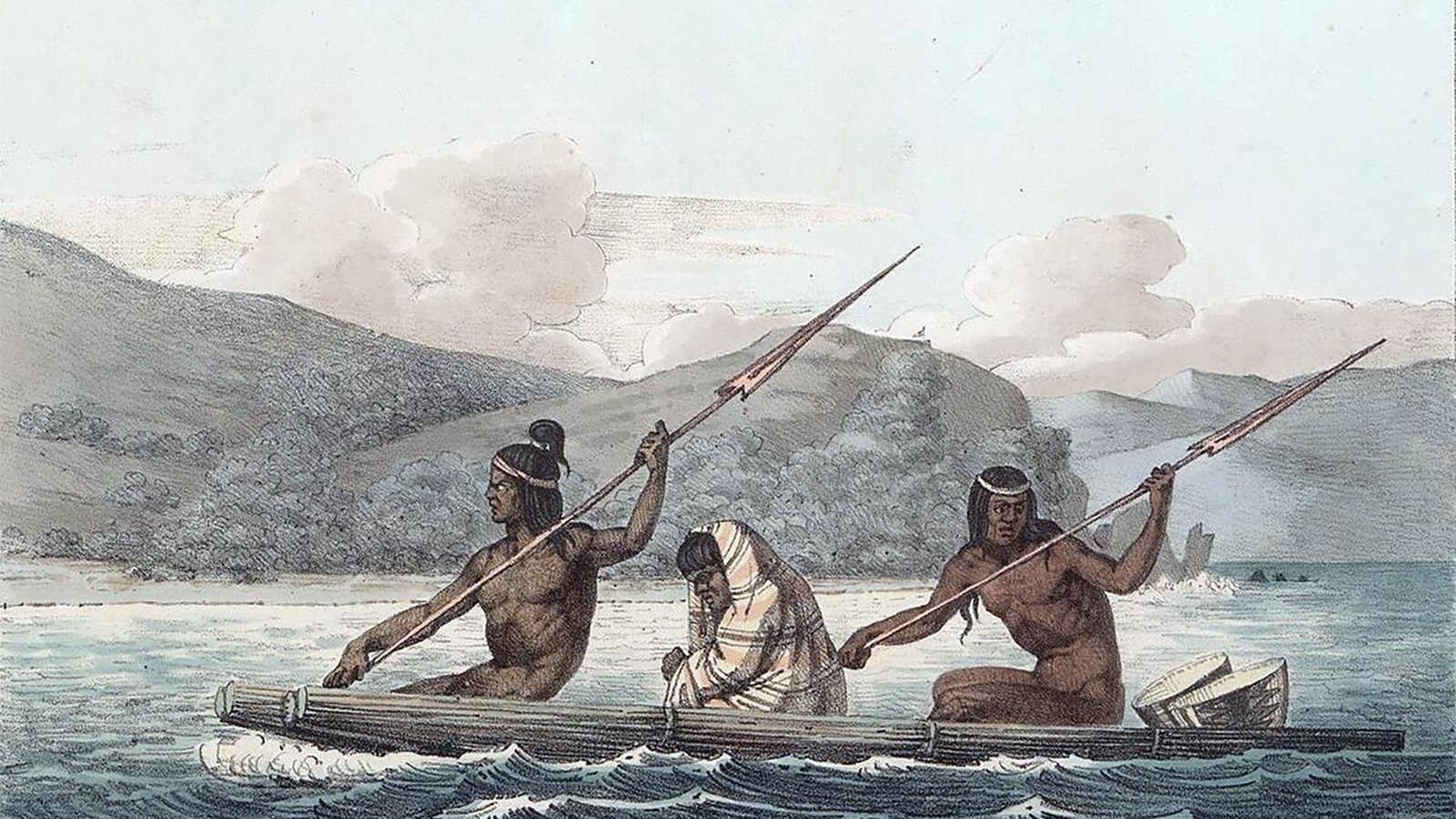Last updated: December 12, 2024
Place
Stop 6: American Indians in the East Bay

Painting of three Ohlone people crossing the waters in San Francisco Bay by Louis Choris.
Transcript for John Muir NHS Cell Phone Tour
Stop Number 6
It seems that everyone here in California came from somewhere else. John Muir arrived in California in 1868. Dr. Strentzel, his father-in-law, arrived here in the Alhambra Valley 14 years earlier. Before them came the gold miners of 1849 and the Spanish exploring this area as early as 1776. Earlier, the Ohlone people – American Indians – settled in this bountiful eastern area of the San Francisco Bay.
Even before the lush orchards of the Alhambra Valley were planted, it would’ve been an Eden. Ohlone men would have caught salmon, bass and other fish in the creeks. They hunted deer and smaller animals for food and hides. Women and children collected berries and shellfish from the Carquinez Straits. Come fall, they would have migrated to the tribe’s special oak trees for a massive harvest and preparation of acorns as a winter food supplement.
Many other native plants played an important role in the life of American Indians, such as the wavy-leaved soap root, which was been harvested to clean the body and hair. The tule reed was used to make baskets and canoes, the California buckeye nut was used to stun fish, and miner’s lettuce was just one of the plants eaten as a leafy green vegetable.
Above you is a beautiful native tree called the California Bay. Try to find a leaf on the ground, crunch it in between your fingers and give it a sniff. These highly aromatic leaves were used by American Indians in a variety of ways. They could be used to smoke out bugs from a lodge, to spice up food, placed under a headband to stop a headache, or simply crushed, rolled up and stuck up the nose to relieve congestion and ease breathing.
The Bay tree also played a part in the Muir family as well. Instead of cutting down a tree each year for Christmas, the Muirs would trim a branch off of one of the Bay trees on Mt. Wanda (named after Muir’s oldest daughter), then bring that to the home and decorate it. It looks different and certainly smells different than the traditional Christmas evergreen, but was easy to get used to once covered in Victorian ornaments.
